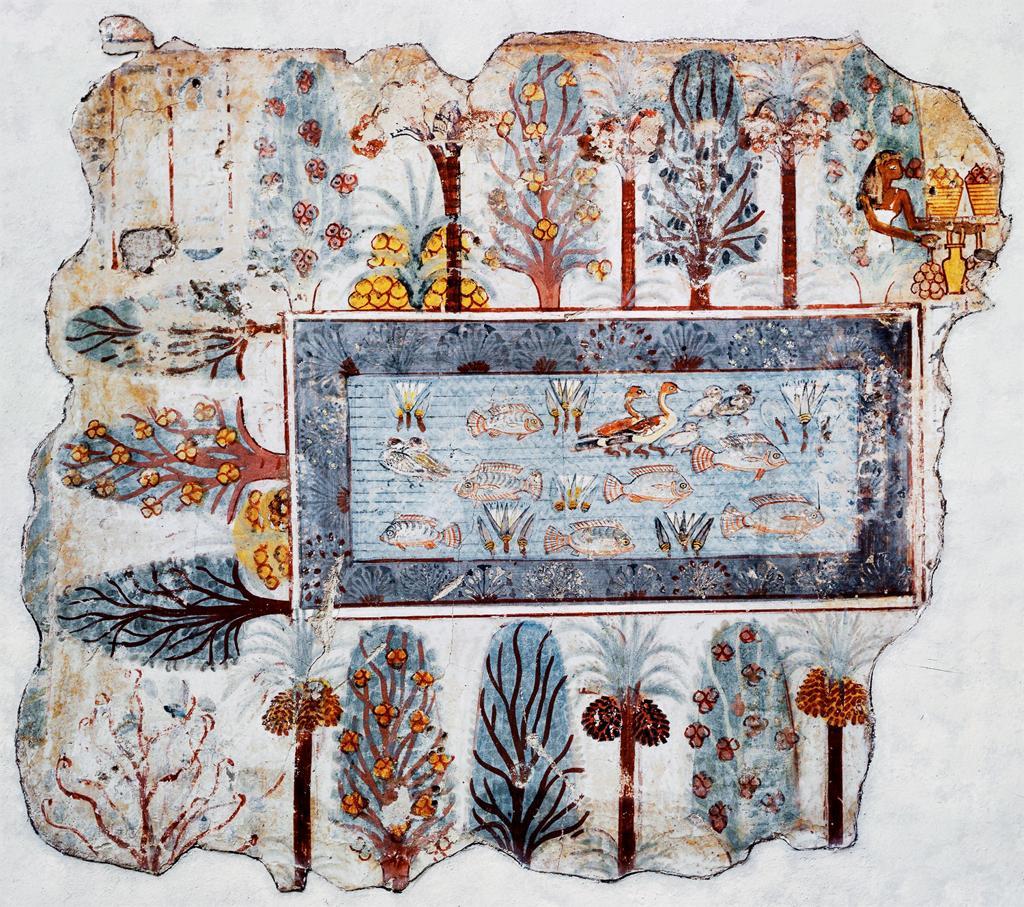Art for Eternity
What mattered most was not prettiness but completeness. It was the artists’ task to preserve everything as clearly and permanently as possible. So they did not set out to sketch nature as it appeared to them from any fortuitous angle. They drew from memory, according to strict rules which ensured that everything that had to go into the picture would stand out in perfect clarity. Their method, in fact, resembled that of the map-maker rather than that of the painter.

The above picture shows it in a simple example, representing a garden with a pond. If we had to draw such a motif we might wonder from which angle to approach it. The shape and character of the trees could be seen clearly only from the sides, the shape of the pond would be visible only if seen from above. The Egyptians had no compunction about this problem. They would simply draw the pond as if it were seen from above, and the trees from the side. The fishes and birds in the pond, on the other hand, would hardly look recognizable as seen from above, so they were drawn in profile.
In such a simple picture, we can easily understand the artist’s procedure. A similar method is often used by children. But the Egyptians were much more consistent in their application of these methods than children ever are. Everything had to be represented from its most characteristic angle.
Taken from “The Story of Art” by E. H. Gombrich.